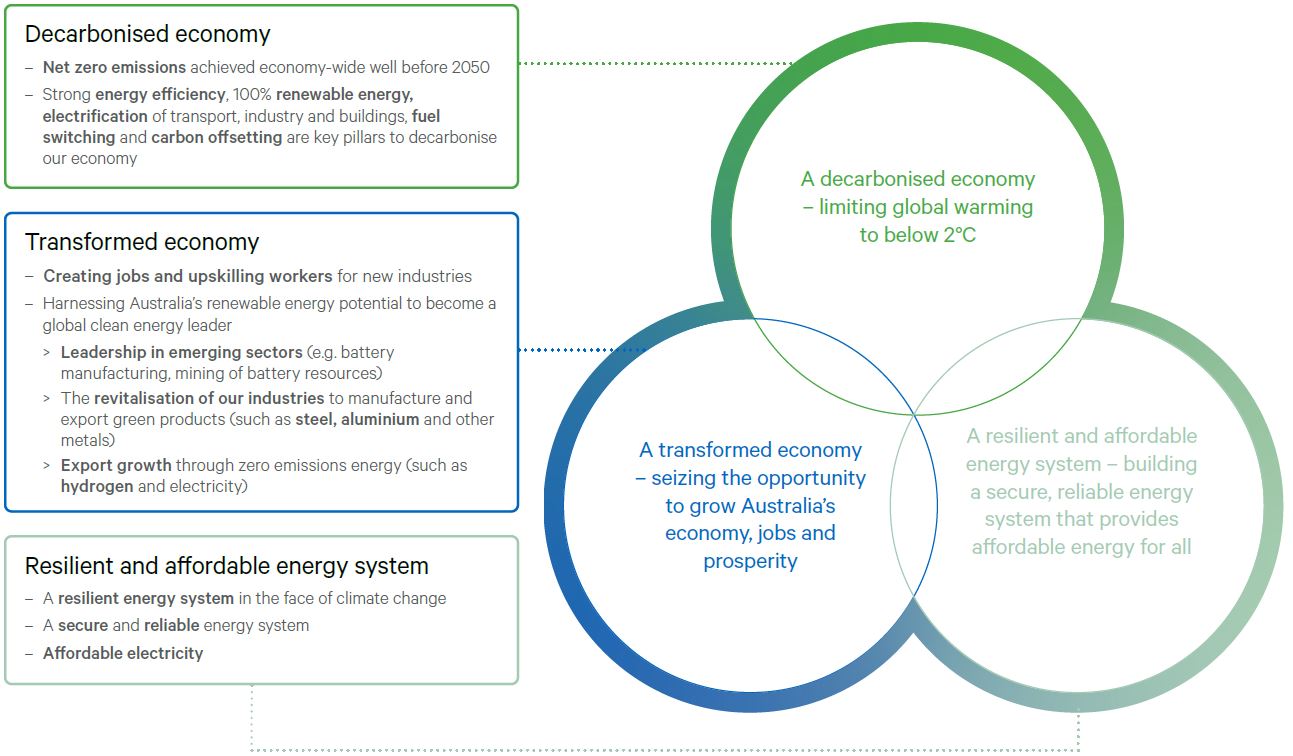Our Energy Vision
In October 2021, we released our Energy Vision – a vital piece of work guiding our long-term planning and supporting other energy system stakeholders in formulating policies, reforms and investments that enable the rapid and orderly decarbonisation of our energy system.
Developed in collaboration with independent experts, CSIRO, ClimateWorks Australia and The Brattle Group, our Energy Vision models the implications of six possible future scenarios for Australia’s energy system over the coming years to 2050.
The scenarios range from a future based on current trends, to a backwards-looking sharp slump in Australia’s economic growth, to more optimistic scenarios in which Australia hits the Paris Agreement’s aspirational 1.5°C decarbonisation target and becomes a global, clean energy superpower.
Our analysis indicates that Australia’s energy system is critical to enabling a decarbonised economy and key to seizing the opportunity to grow our economy and jobs in a clean energy future. The transition towards a clean energy future can create immense opportunity for Australia – if we set ourselves on the optimal course.
Our evidence-based vision is for Australia to become a global clean energy leader, benefitting communities, the economy and the environment. Modelling shows that, with the right policies in place and with all stakeholders working together towards a mutually agreed goal, this future is highly achievable. But the pace of change needs to rapidly accelerate.







